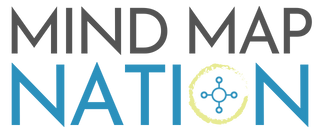Mind Maps to Master Business Decisions
I always appreciate receiving intriguing business questions from the MMN community, and Sean's query caught my eye as a fantastic opportunity to showcase the power of Mind Maps to parse through complex strategic and product decisions that often stump even the most efficient companies.
Here’s his original post (emphasis mine):
“Hi Sheng, I am a Subject Matter Expert (SME) in Trade Finance with a banking institution. I am responsible for managing change requests from our operations team, in doing so I need to understand the risks and business benefits. I would be required to put together a high level business requirement including user stories and acceptance criteria. Then I might need to engage with our IT Teams to ensure that once the change has been prioritized by the Product Owner it can be developed and deployed. How can mind mapping help me move from the as is to the to be state?”
I've broken down my response into two steps to showcase the evolution of my understanding of Sean's role, objectives, and organization based on the single paragraph he provided.
The first step involves categorizing each piece of information into major buckets. Imagine we're building a house; this step is akin to translating our client's objectives into our language and organizing the building materials by type (wood, stone, marble, etc.) for easy access later.
At this point, I'm not concerned about a specific sequence. The order in which I'm mapping the information is based solely on how Sean presents it.
Step 2 involves rearranging the elements into an ordered flow rooted in my professional understanding of product teams and business units. This mind map essentially functions as a system diagram, reflecting the flow of information from the market (i.e., users) into the company through the Operations team. This information is then translated into formal change requests (i.e., tickets) by SMEs like Sean, who assess the risks and benefits of the proposed solution before handing it over to Product Owners for prioritization and assignment to engineering teams.
When properly implemented, this system establishes a feedback loop that enables the entire company to adapt to changing market conditions and ultimately better serve its customers.
If you’re curious, here’s the Loom walkthrough of my process.
The gist is that, as a SME, Sean can use Mind Maps to better understand the user pain and proposed solution, guiding the alignment of user and business objectives.
Change requests within an organization should always aim to either alleviate some form of pain, be it external user issues or internal organizational inefficiencies, or to capture opportunities. Mind Maps excel at visualizing critical evaluation questions to either support or invalidate these change requests.
In other words, the Mind Map helps Sean analyze the input (the change request), taking into account risks, benefits, user pain, and the alignment between user objectives and business objectives. Additionally, he can map out the potential impact on key performance indicators (KPIs) such as revenue and profit growth, as well as the costs and unknowns associated with implementing the proposed solution.
The second area where Sean can employ Mind Maps is in creating "user journey blueprints" to visually guide Product Owners and Engineers through exactly how the proposed solution would affect users, stakeholders, and the achievement of business objectives.
By utilizing these two Mind Map applications, Sean can help ensure that both user and business objectives are met while streamlining the entire process. This approach not only enhances the efficiency of managing change requests but also promotes a clearer understanding of the proposed solution's impact on the organization as a whole system rather than just its parts.
Make the most of your mind maps
Thanks for reading this article. If you found it useful, you can get a new mind map in your inbox every week. Epiphany is your dose of structured thinking and ordered chaos.


